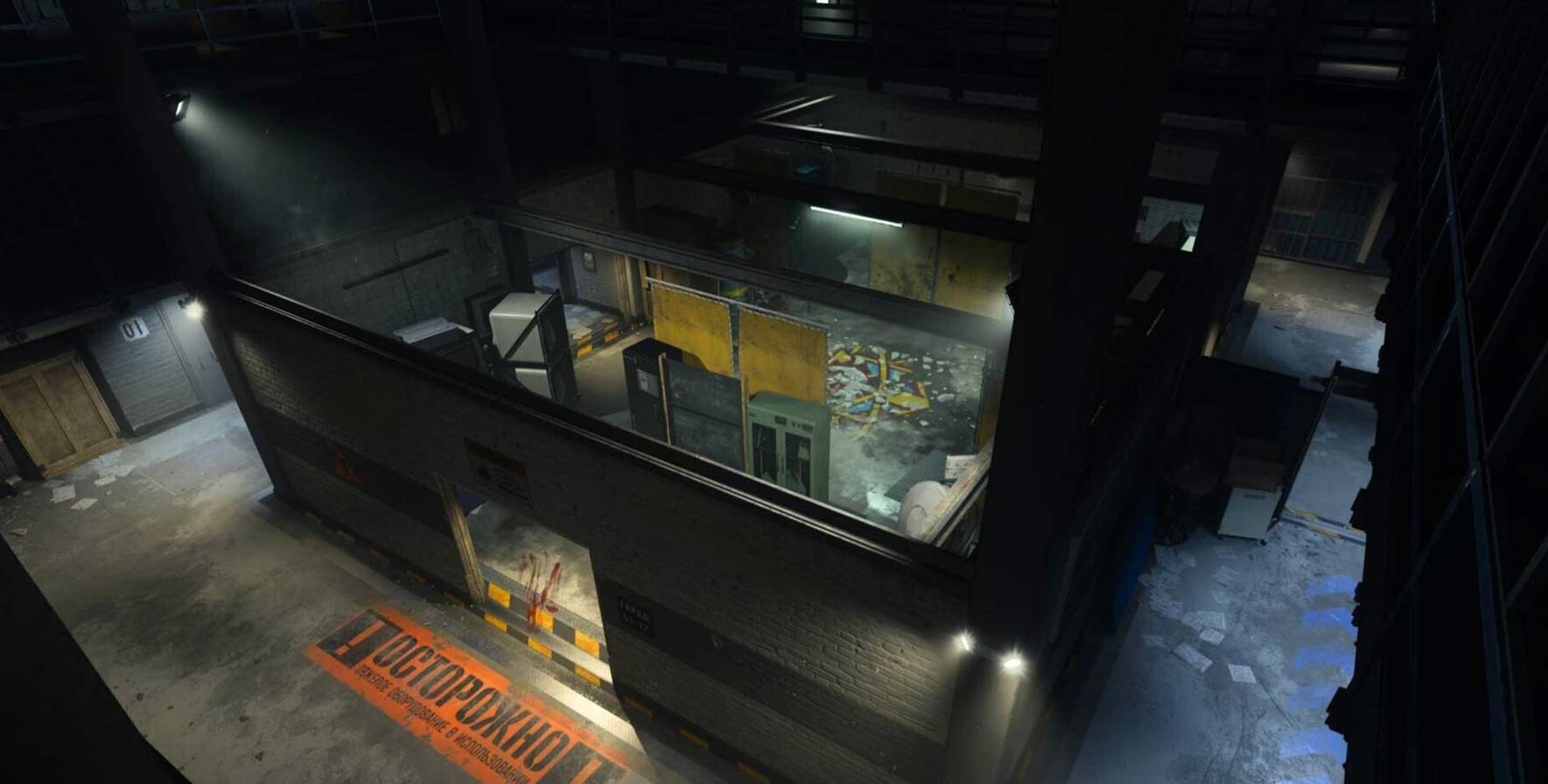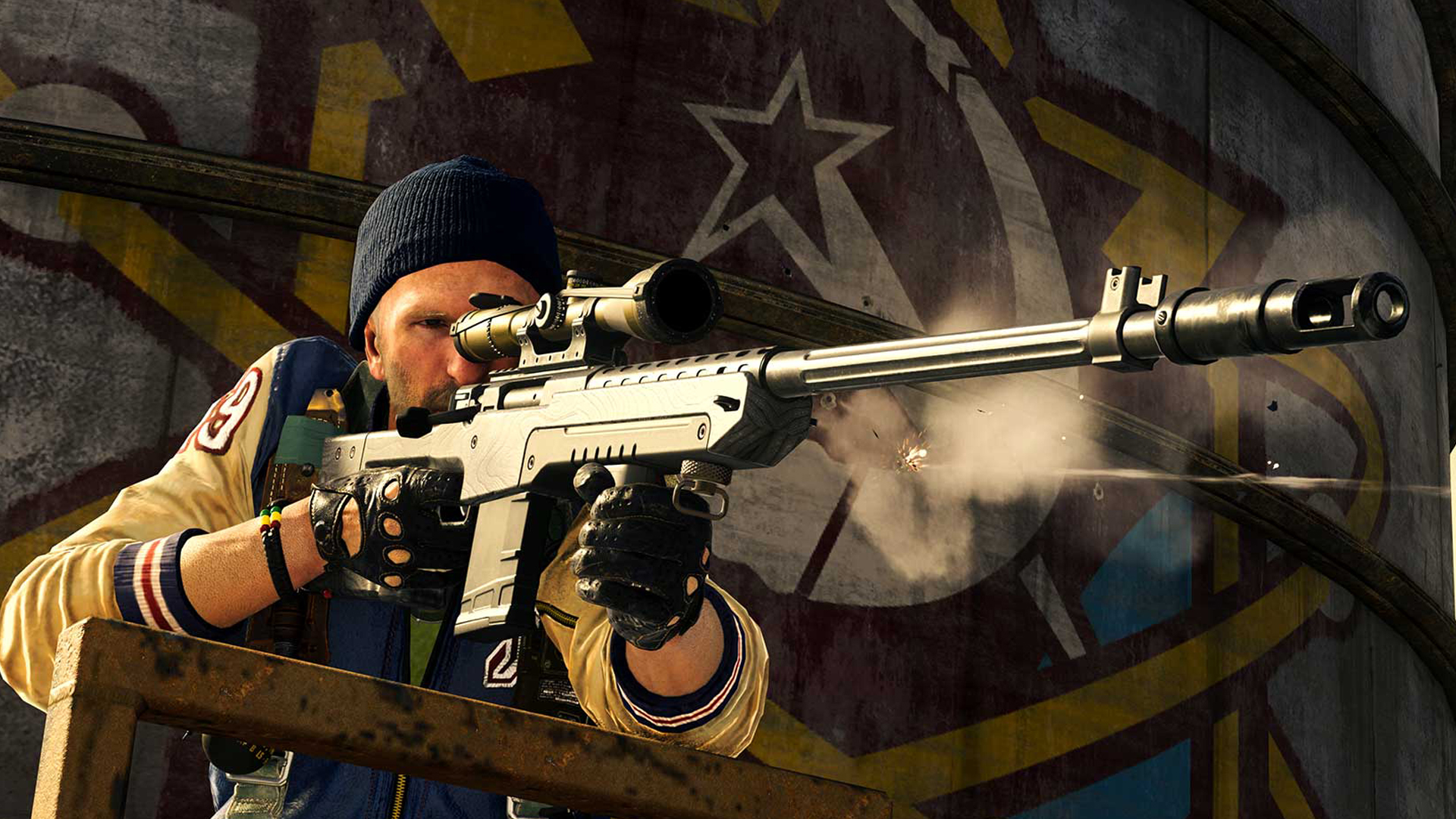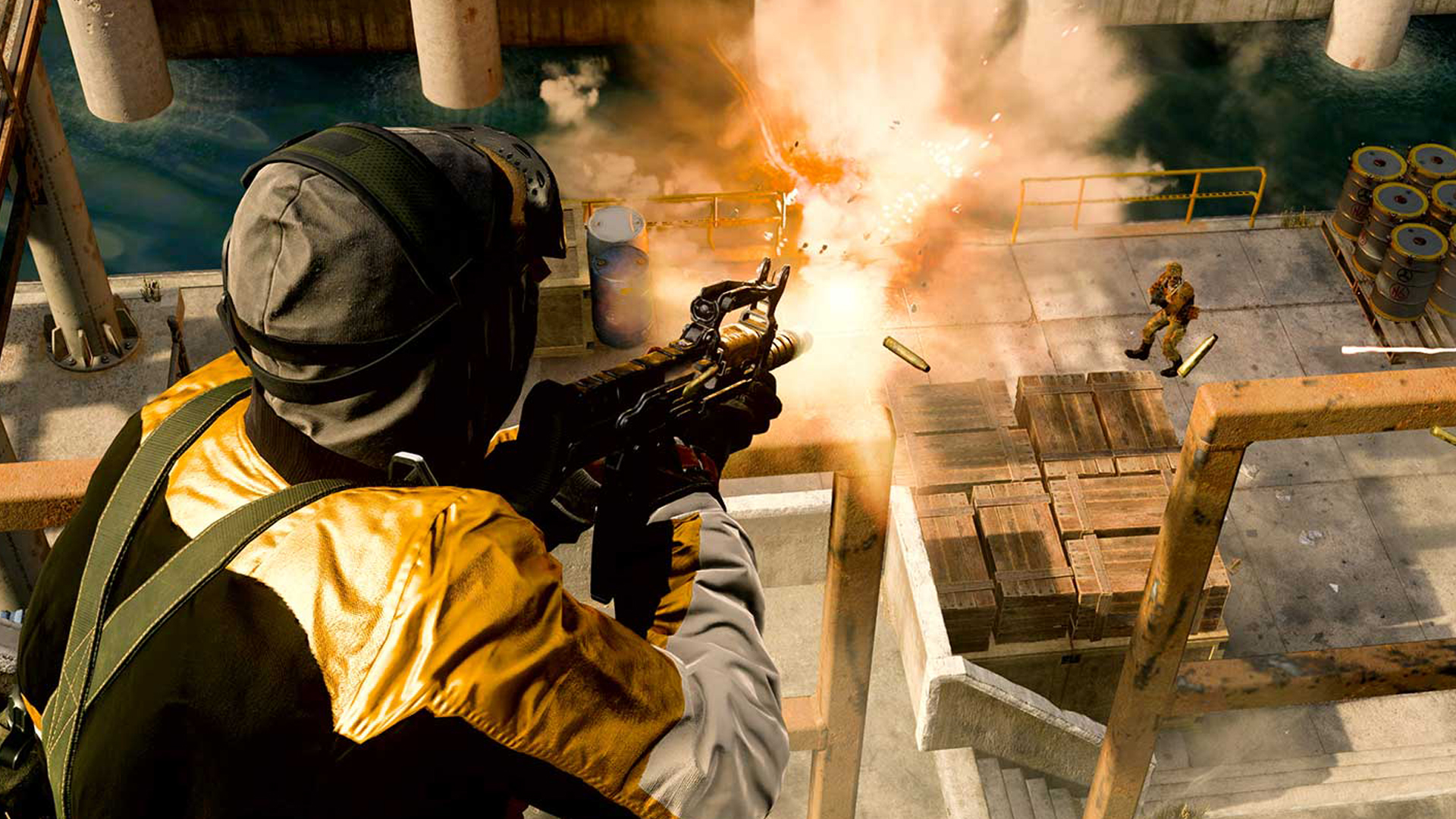The grim history of Warzone's Rebirth Island
The real Rebirth Island was home to secret Cold War horrors, until it disappeared from the map.

Fittingly for a classified place, Rebirth Island no longer exists. Once an arid, teardrop-shaped scrap of earth in the Aral Sea, some 2,300 miles south of Moscow, the island grew and grew, as if by some magical realist reflection of its secret influence on the world. This wasn’t fiction, however, but the result of a wrongheaded Soviet canal experiment in the ‘60s. The sea was drying up, and the land expanding. The island became a peninsula, and was ultimately swallowed by the surrounding desert. Today, the evidence of your eyes would suggest it was never there at all.
The Rebirth Island of Call of Duty: Warzone, cramped and hemmed in by grey waves, is captured at a particular moment in time; the moment at which it was the testing ground for bombs filled not with explosives, but anthrax and plague.
Warzone’s map makeup doesn’t stretch too far from the truth. During its population peak—when up to 150 scientists, technicians and soldiers made Vozrozhdeniya (‘Rebirth’) Island their summer home—the facility constituted half a dozen dilapidated army buildings and a landing strip. Besides the test animals and the native lizards, the military personnel were the only living things for miles; the sea itself was so contaminated by agricultural fertiliser that nothing could survive.
Scientists couldn’t tell family where they were going, or for what purpose. During the other seven or eight months of the year, most of them worked in Moscow at the headquarters of Biopreparat, the state pharmaceutical agency. Over two decades, they were tasked with turning bacteria, toxins and viruses—threats which, as we’ve been recently reminded, endanger us all—into tools that could be used against the USSR’s enemies. Biopreparat’s yellow-roofed Moscow HQ was the mansion once occupied by 19th century vodka king Pyotr Smirnoff, an irony not lost on agency head Ken Alibek: "Smirnoff’s product has done more than any foreign invader to undermine the health of Russian citizens," he wrote in his 1999 book, Biohazard.
Although researchers like Alibek had military rank, they wore ordinary clothes, and carried passports for cover identities as civilian scientists. The ruse enabled Biopreparat staff to request foreign samples of vaccine-resistant disease strains for the lab, and get them. The rest of its material came mainly from the KGB. The intelligence agency was constantly on the lookout for handy new diseases around the world, which it would send back to Moscow in diplomatic pouches.
Biopreparat ran more than 40 sites between Russia and Kazakhstan, but the most notorious is Vozrozhdeniya. It wasn’t so infamous in its day, since its operation was carried out in the utmost secrecy, experiments meticulously hidden even by the standards of the Cold War. Everything connected to the tests was incinerated, and all records destroyed.
Vozrozhdeniya was known within Biopreparat, however, as the "kingdom of cockroaches," in reference to an ancient Russian legend. The scientists took no pleasure in going there. While many assume the Soviet Union was uniformly cold, Rebirth Island was situated between Uzbekistan and Kazakhstan in Central Asia; its boiling desert climate would fry the grass by June, every year without fail, and the dust got everywhere. The evenings offered little entertainment, leading to scandalous pregnancies and new drink problems. As the scientists picked over their rations of porridge and fatty sausage, they enviously eyed the test monkeys, who ate banana, oranges and apples—fresh fruit rarely available to the USSR’s citizens.
Keep up to date with the most important stories and the best deals, as picked by the PC Gamer team.
Biopreparat picked monkeys for their human-like respiratory systems. Chained to posts, they were subjected to aerosol cocktails of anthrax, tularemia, Q fever, brucellosis, glanders, and plague. The scientists even explored AIDs, which proved a dead end—HIV’s incubation period was too long to win wars. The scientists watched the monkeys die over several days. A victim of anthrax might reasonably assume they’ve escaped unharmed, since the early symptoms resemble a cold; death comes later, often suddenly, as the lungs fill up with liquid. A 50 percent infection rate was considered the threshold for success.
Where America’s biological weapons programme focused on ailments that could be countered with vaccines or antibiotics in case of accident, the Soviets decided incurable illnesses would be most effective. The last naturally occurring case of smallpox had been in 1977; years later, Biopreparat was cultivating a weapons-quality variant.
Just as the Soviet Union was signing a biological disarmament treaty, it was quietly stockpiling dozens of tonnes of plague and smallpox, plus hundreds of tons of anthrax, near major Russian cities including the capital—a plot that makes the latest Black Ops sound plausible. By the late ‘80s, the country was loading warheads with fermented anthrax and planning attacks on New York, LA, Seattle and Chicago. A single one of those missiles could have wiped out a city, while Biopreparat’s plague weapon was more virulent than the kind that killed a quarter of Europe in the Middle Ages. The scientists thought of themselves as the equals and opposites of those who had worked on America’s Manhattan Project.
Then came the collapse of the Soviet Union. Rebirth Island’s facility was closed in November 1991, and its temporary citizens evacuated over several weeks. The infrastructure was left behind. Abnormally high instances of plague were found in local rats, and Central Asia suffered several outbreaks in the ‘90s - consequences Alibek believes Biopreparat were responsible for.
In 1992, Alibek defected, fleeing to the US with his family. Most of what he told the American authorities in comprehensive debriefing sessions was news to them. "If I had stayed in Russia," he wrote, "I would have been a major general by now, and you would never have heard my name."

Russia’s stockpile of biological weapons has long since been destroyed—but in the fashion of a classic CoD plot, Soviet research has spread to rogue nations and terrorist groups. Alibek warned two decades ago that Western defences against biological weapons were dangerously inadequate. And while Covid was no weapon, it has proven him right—exposing our lack of pandemic preparedness and the vulnerability of our health systems.
"Some of the best scientists I’ve met in the West say it isn’t possible to alter viruses genetically to make reliable weapons, or to store enough of a given pathogen for strategic purposes, or to deliver it in a way that assures maximum killing power," Alibek wrote. "My knowledge and experience tell me that they are wrong."
To protect ourselves, he suggested, we must learn what biological weapons are and how they work. "The alternative is to remain as helpless as the monkeys in the Aral Sea."
Jeremy Peel is an award-nominated freelance journalist who has been writing and editing for PC Gamer over the past several years. His greatest success during that period was a pandemic article called "Every type of Fall Guy, classified", which kept the lights on at PCG for at least a week. He’s rested on his laurels ever since, indulging his love for ultra-deep, story-driven simulations by submitting monthly interviews with the designers behind Fallout, Dishonored and Deus Ex. He's also written columns on the likes of Jalopy, the ramshackle car game. You can find him on Patreon as The Peel Perspective.




